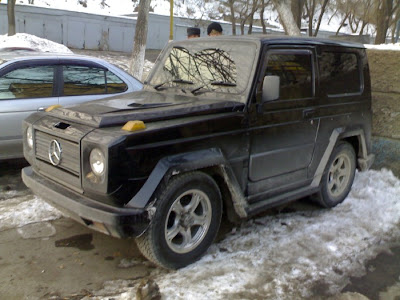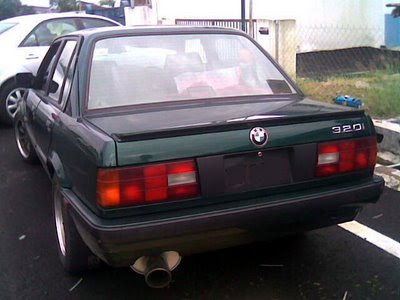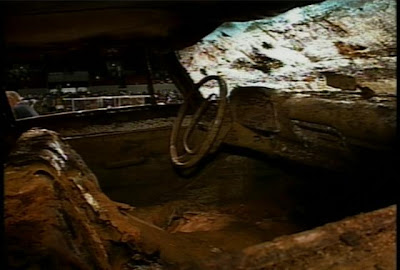 According to a new study from Privilege insurance, three out of five Brits would support a Government ban ruling out drivers from smoking if a child under 16 was in the car. Even though we’re heavy smokers ourselves, we’ll agree with the majority here, as passive smoking isn’t something we’d like to subject our kids to.
According to a new study from Privilege insurance, three out of five Brits would support a Government ban ruling out drivers from smoking if a child under 16 was in the car. Even though we’re heavy smokers ourselves, we’ll agree with the majority here, as passive smoking isn’t something we’d like to subject our kids to.
However, we’ll totally disagree with Privilege’s academic research findings that say smokers drive on average 23 per cent faster than non-smokers and are more prone to accidents not only due to speeding but also because smoking reduces a driver’s ability to deal with other events and generates additional mental strain. What’s next, ban chewing gum in the car? If we follow this kind of logic then we should ban kids from cars –have any doubts that youngsters generate 10 times more mental strain than smoking and that they distract drivers more than anything else? -See the press release after the jump
PRESS RELEASE: PUBLIC DEMAND SMOKING AT THE WHEEL TO BE STUBBED OUT
Seventy per cent of the public would support a Government ban prohibiting drivers from smoking if a child under 16 was in the car according to new research from Privilege Insurance.
With one in twenty youngsters under the age of sixteen subjected to passive smoking from their parents, the health implications for the next generation are worrying. And new academic research has shown that smokers have an increased crash risk, leaving youngsters in both health and accident danger.
Privilege’s academic research has proved smokers drive on average 23 per cent faster than non-smokers. As speed is a contributory factor in over a quarter of all fatal accidents[i], smokers not only have to deal with the possibility of being diagnosed with a fatal disease, they are now more likely than non smokers to be involved in a crash.
Previous Privilege research shows the number of people smoking while driving is predicted to increase by 14 per cent following the smoking ban on 1st July.
Jennifer Culley, from Privilege Insurance said:
“Smoking reduces a driver’s ability to deal with other events and generates additional mental strain, especially for people smoking while driving for the first time.â€
Dr Mark Young, from Brunel University, who carried out the study on behalf of Privilege, explained the significance of its findings:
“The study clearly shows that smokers do have a tendency to drive faster and more inconsistently than non-smokers – in effect, confirming theories that smokers tend to have a more risk-taking attitude to life. It’s also clear that smoking is an activity that diverts a driver’s attention away from the task of driving, especially for those drivers who choose to start smoking in their car following the ban. Drivers should therefore exercise extreme caution and discretion if they choose to smoke and drive.
“In addition, the health implications of smoking have been hugely reported and England is following the lead of countries such as New Zealand , Germany , Scotland , Brazil and India which have already banned smoking in company cars for health reasons.â€
Safety while driving is paramount and will reduce the chances of having an accident. Privilege Insurance guarantees to beat renewal quotes for drivers with 4+ years no claims discount and on an equivalent basis to ours. Offer ends 31 October 2007.
US States that have banned smoking in cars for passengers under 16
Arkansas
Louisiana
New jersey
California
Georgia
Michigan
New York
Pennsylvania
Vermont
Countries looking into banning smoking primarily on health grounds
Germany
Australia
Countries that have laws in place against smoking and driving due to the distraction
Brazil
India
Scotland (a £60 fine is imposed on offenders)
 Ah, those Russian folks; apart from having a great sense of humour turns out that they also have an eye for transformations. Who would ever think that converting a Suzuki Samurai -also called Jimny, Sierra, Caribbean, Santana, Holden Drover (Australia) and Maruti Gypsy, into a miniature Mercedes G-Class would turn out so successful that it could probably fool an untrained eye! -One more pic after the jump
Ah, those Russian folks; apart from having a great sense of humour turns out that they also have an eye for transformations. Who would ever think that converting a Suzuki Samurai -also called Jimny, Sierra, Caribbean, Santana, Holden Drover (Australia) and Maruti Gypsy, into a miniature Mercedes G-Class would turn out so successful that it could probably fool an untrained eye! -One more pic after the jump 

 The race is on to find the "holy grail" of
The race is on to find the "holy grail" of 










